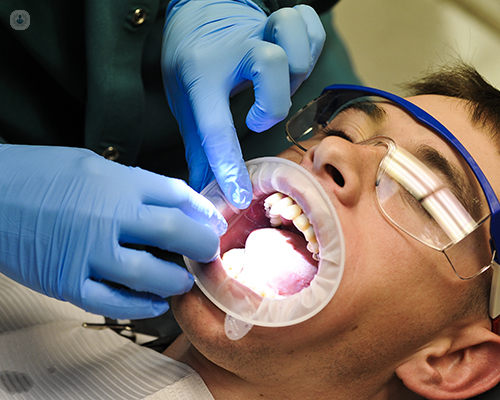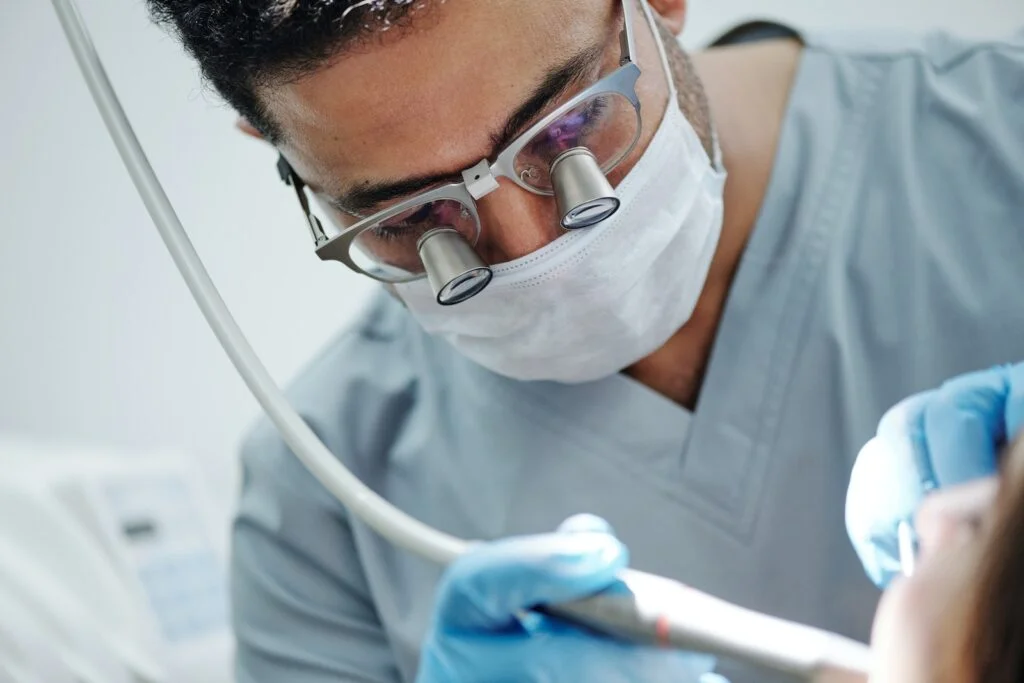Relied On Dentist Applecross WA: Comprehensive Dental Look After All Ages
Relied On Dentist Applecross WA: Comprehensive Dental Look After All Ages
Blog Article
Navigating Gum Treatments: Making Certain Optimal Gum Tissue Health and Feature
Maintaining optimum gum health and wellness is important for total oral wellness and well-being. Gum therapies play a considerable duty in dealing with gum tissue disease and making sure the proper function of the gum tissues. From non-surgical treatments to advanced surgeries, the landscape of gum therapies can be complex. Comprehending the subtleties of each option, acknowledging the indications of gum tissue illness, and recognizing when to look for professional treatment are crucial steps towards accomplishing and keeping healthy and balanced gums. By checking out the different therapy methods available and accepting preventative actions, individuals can take proactive steps towards protecting their gum tissue health and function properly.
Importance of Periodontal Health And Wellness
Periodontal wellness refers to the condition of the gum tissues, the bone structure supporting the teeth, and the connective tissues that hold the teeth in place. Overlooking gum wellness can lead to periodontal condition, which is not only a leading cause of tooth loss yet likewise has effects for systemic health.

Typical Indicators of Periodontal Illness
Routine dental examinations are necessary for identifying common indications of gum tissue disease early on and implementing prompt interventions to keep optimum periodontal health and wellness. One of one of the most widespread indicators of gum tissue disease is gum swelling, defined by redness, swelling, and inflammation. Hemorrhaging periodontals, particularly throughout cleaning or flossing, can indicate gingivitis, the beginning of gum tissue illness. Persistent halitosis or a poor taste in the mouth can likewise be warning indicators of gum illness, as they are commonly brought on by bacteria in the mouth as a result of poor oral hygiene. Declining periodontals, where the gums pull away from the teeth, creating pockets that trap food and germs, are one more common sign of periodontal illness. Loosened or moving teeth, changes in the way teeth meshed when biting, and the development of abscesses or pus between teeth and gums are all sophisticated indicators of periodontal disease that call for prompt professional treatment to stop further damage and missing teeth.
Non-Surgical Therapy Alternatives
To attend to early indications of gum condition like swelling, hemorrhaging gum tissues, and bad breath, non-surgical treatment options play an important duty in maintaining optimal gum wellness. Non-surgical therapies are commonly the first line of defense versus periodontal disease and can effectively halt its development when captured early. One typical non-surgical technique is expert dental cleaning, also referred to as scaling and root planing. Throughout this treatment, dental experts remove plaque and tartar from above and listed below the gumline, raveling harsh spots on the origins of the teeth to stop microorganisms from re-adhering.
Additionally, lifestyle adjustments like enhancing oral health methods, stopping cigarette smoking, and managing stress and anxiety can match non-surgical treatments to enhance their performance in combating gum disease. By including these non-surgical treatment options into a thorough gum treatment strategy, individuals can promote gum tissue health and prevent the requirement for even more intrusive treatments in the future.

Surgical Treatments for Advanced Situations
Surgery come to be needed in sophisticated situations of gum tissue condition when non-surgical therapies are no much longer adequate to resolve the degree of damages and original site infection existing in the gum cells. These treatments are targeted at halting the development of gum disease, promoting cells regeneration, and bring back oral health and feature.
In this procedure, the gum tissues are raised back, and tartar is eliminated. This helps in reducing the dimension of the gum pockets, making it simpler to maintain the area tidy.

Upkeep and Preventive Care
After going through essential medical treatments for sophisticated instances of gum disease, preserving optimum gum tissue health with constant surveillance and preventive care is vital. Routine dental examinations are crucial for keeping track of periodontal Get More Information health and wellness and identifying any kind of indications of condition progression early on.
A balanced diet plan reduced in sweet foods and high in nutrients supports gum tissue health and wellness. By diligently complying with these maintenance and preventive care actions, individuals can maintain optimal periodontal health and stop the progression of periodontal disease.
Final Thought
Periodontal therapies, both non-surgical and surgical, play an essential role in managing gum tissue illness and avoiding further complications. By addressing signs of gum tissue illness quickly and complying with preferred therapy strategies, people can boost their oral health and quality of life.
Report this page